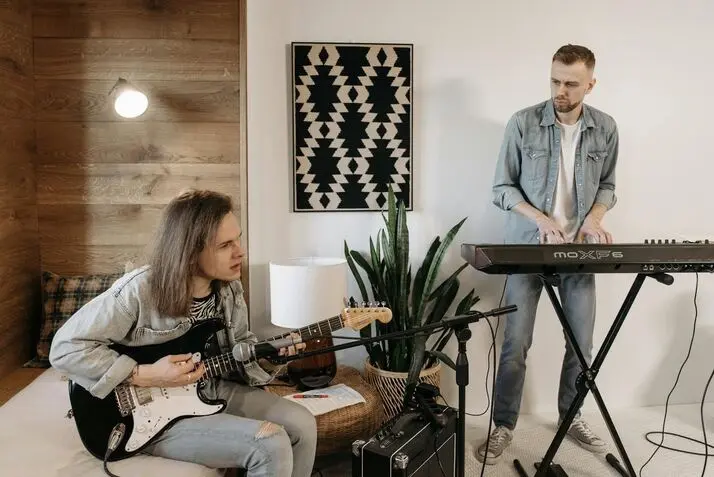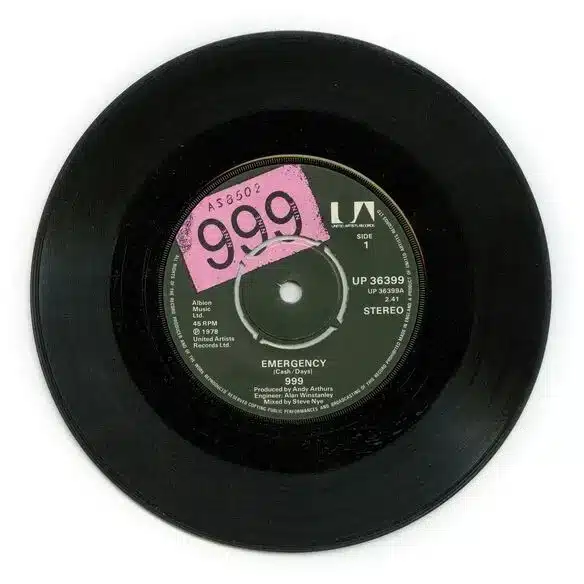
Hosting a music bingo night sounds easy enough just press play, sit back, and let the playlist run, right? Not quite. If you’ve ever played Muzingo, you know it’s more than just pressing buttons. It’s about timing, energy, engagement and yes, keeping the songs short and sweet. In fact, one of the most common mistakes new music bingo hosts make is playing full songs during gameplay. It might seem like a harmless decision, but it could be the very thing that’s slowing down your game and losing your audience’s attention.
Whether you’re planning a virtual event with Muzingo or gathering friends at a local venue, knowing how to host music bingo effectively is key to keeping your crowd pumped and your game running smoothly. And if you’re looking for music bingo ideas, or searching for the best way to run music bingo, one golden rule stands out: never play the full track.
RELATED BLOG POSTS
- How to Organize a Successful Bingo Fundraiser
- How to Streamline Music Bingo Preparation
- Music Bingo: A Detailed Guide for Beginners
- How to make bingo boards blank from scratch: 5 DIY methods
Why the Best Music Bingo Hosts Never Play Full Songs
Music bingo is built on two critical ingredients: pace and participation. The moment the game starts, the energy in the room or on the screen should feel electric. But nothing puts a damper on that energy faster than a long, drawn-out playlist where players are left waiting for the end of a full song before the next round begins. Playing entire tracks might seem like a good way to let everyone soak in the music, but in reality, it slows everything down, makes the game feel sluggish, and ultimately distracts players from the goal: matching titles and shouting “Muzingo!”
Here’s why the best music bingo hosts never play full songs and why you shouldn’t either:
1.Pacing is Everything
Playing a full 3–4 minute song kills momentum. Instead, stick to the 20–40 second sweet spot. It’s long enough to spark excitement, short enough to keep the game moving. Think about a catchy hook or iconic chorus that’s all you need.
2. Recognition Over Replay
Muzingo is powered by familiar music playlists, and the magic lies in the memory. Players don’t need the whole song, they just need the recognizable part. The faster they recognize the track, the faster they scan their board and stay engaged.
3. Thematic Playlists Make It Easy
With Muzingo, you can choose from engaging playlists like Afro beats, hip-hop grooves, 90s hits, Disney soundtracks, gospel medleys, and more. These themed playlists are packed with recognizable tracks, making short clips even more effective.
4. Short Clips Keep the Energy High
Fast-paced rounds mean more excitement. When songs are short, there’s less waiting and more reacting. You’ll see players dancing in their seats, belting out lyrics, and scrambling to match their cards. That’s what makes music bingo unforgettable.
5. You Create Momentum, Not Just a Playlist
Every clip is a cue for interaction. When you keep things snappy, players stay sharp and the vibe stays upbeat. Full songs stall momentum. Short clips build it.

6. Hosting Is a Performance
Whether you’re just learning how to host music bingo or you’re refining your flow, remember: as the host, you set the tone. Playing shorter clips gives you space to interact, crack jokes, encourage players, and keep the room alive.
7. One of the Most Overlooked Music Bingo Best Practices
Most beginner hosts assume longer is better. But in reality, shorter is smarter. Quick clips let you fit in more songs, keep attention levels high, and wrap up rounds before players lose interest. It’s one of the top music bingo best practices pros swear by.
8. Pro Tip: Use Pre-Cut Clips or Muzingo Tools
Don’t waste time dragging a slider mid-game. Instead, prepare your clips ahead of time or use Muzingo’s built-in audio tools to trim songs to the ideal length. This keeps the experience smooth for everyone, especially you, the host.
Music Bingo Best Practices for Hosts
Here are a few best practices to follow if you want to level up your hosting game:
Take Your Game Nights to the Next Level
Muzingo is a fun game where players listen to music tracks and match them to bingo cards — competing to win prizes with friends.
Play Muzingo FreeNo Card Required
- Use short clips (20–40 seconds max) to keep energy up and rounds moving.
- Have a timer between songs around 5–10 seconds to allow for marking.
- Curate playlists by theme (e.g., Hip-hop grooves, Country hits, Gospel classics). Muzingo has tons of great options.
- Practice your hosting style, bring enthusiasm, call out winners confidently, and keep your audience engaged.
- Avoid dead air, interact between clips, share fun facts, or encourage players.
These steps may sound simple, but they’re the cornerstone of music bingo best practices that keep players coming back week after week.
FAQs
Q: Can I play full songs if I’m only doing one or two rounds?
A: It’s not recommended. Even in short sessions, playing full songs affects pacing. A better idea is to play the hook or chorus that people recognize instantly.
Q: What’s the ideal song length for Muzingo?
A: Between 20 to 40 seconds. Long enough for recognition, short enough to keep it fun.
Q: What’s the best way to run music bingo online with friends?
A: Use platforms like Muzingo that are designed for remote play. Muzingo’s format makes it easy to share links, host themed rounds, and manage song playback without hassle.

Conclusion
Music Bingo is one of those rare activities that blends the thrill of competition with the universal love of music. It works at backyard barbecues, team-building events, birthday parties, and even online hangouts. It’s simple, inclusive, and taps into the joy of recognizing your favorite songs fast. But here’s the catch: if you’re playing full tracks instead of short, strategic clips, you’re not just slowing the game down you’re draining it of its magic.
Playing full-length songs might feel like the obvious move, especially if you’re a music lover or a DJ who thrives on spinning great tracks. After all, why cut off a classic right when everyone’s grooving to it? But in the context of Music Bingo, full songs don’t energize your game they kill the momentum. Great music bingo hosts know this. They keep things moving, keep players alert, and never give a song more time than it deserves. At its core, Music Bingo isn’t about playing a song from start to finish for people to enjoy in silence. It’s about recognition. The moment a song begins especially a familiar one, players get excited, start scanning their cards, and race to find the match. That adrenaline comes from speed and certainty.
Most players can identify a song within the first 5 to 10 seconds. Sometimes even less. Think about those iconic intros like “Billie Jean,” “Sweet Caroline,” “Shape of You.” You know them within a beat or two. The longer you let the track play, the less pressure there is to act quickly, and the more your game starts to feel like background music instead of an interactive event.
So why is this such a big deal? And how do you strike the perfect balance between letting people enjoy the music and maintaining the pace of play?
What’s your favorite theme for a Muzingo night and how do you keep your music bingo energy high?


